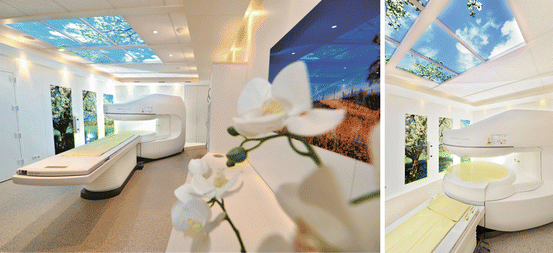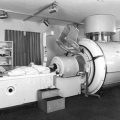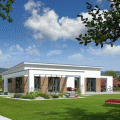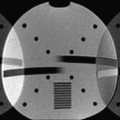(1)
Department of MRI, Medical Center at Siegerland Airport, Burbach, Germany
A responsible way of medical diagnosis and treatment is always an economical way. To waste resources means that fewer people are given the medical service they need.
The keyword is “value-based” payment. For several years, productivity-based payment will persist – but in the near future, not the procedure will be paid but the outcome, the value it has for the medical community: patient, insurer, hospital, referring physician, and government (Arenson 2015).
We may like it or not, we may call it in human or mechanistic, it is the way medicine is looked at by those who make the decisions all over the world.
It is wise, to prepare for this development. This requires two measurements:
Use all rationalizing reserves. Optimize cost-effectiveness.
If performance is paid, we have to define what performance is! (definitely the more difficult task).
To come back to our low-field MRI: what possible consequences could low-field MRI have on cost-effectiveness?
The term “effectiveness” is complex. To analyse it, we need public health studies on the costs/additional quality adjusted live year (QALY, see Chap. 1) for low- and high-field MRI for different indications.
The term “cost” is more easy: the best way to get an impression on the economical aspects of low-field magnetic resonance imaging is to establish a cost calculation, something everyone who goes in private MRI business has to do.
All figures and calculation are estimated based on the conditions in the German health care and economic system and have to be adapted to the individual situation.
The calculation has to consider the costs of investment:
Location
System components
Installation
Financing
And all operational costs:
Room costs
Energy
Maintenance costs
Employees
Variable costs
We will compare the costs of a low-field imaging site with a high-field imaging site. The revenues are not discussed, since they are depending too much on the individual situation.
The calculation only addresses the MRI component of a diagnostic imaging institute.
Since such an institute can be understood as a modular combination of different modalities (X-ray, computed tomography, nuclear medicine, ultrasound, breast imaging, interventional radiology, and MRI), the assessment of one single module can be performed with sufficient exactness. As stated above, the given figures represent the conditions in Germany.
8.1 Investment
Before you invest time and money in a new imaging business, you have to answer multiple questions. The three most obvious ones are:
Is there a need for this imaging site? (you will definitely know 1 year later)
Where is the best location? (where would you like to go, if you would be a patient?)
What is the right equipment?
8.1.1 Location
Sometimes, the location is already determined. This is true, if the imaging institute is part of a hospital.
If the location can be chosen deliberately, several prerequisites should be taken care of. Most important is good access to traffic and public transportation, as well as enough parking space.
The location in general should be attractive and comfortable for the patient. Convenience, a calm, competent atmosphere, is important. The location should be easy to find, and easy to access, particularly for handicapped patients (Fig. 8.1).


Fig. 8.1
Ambitious, patient-friendly design of an open MRI site (Radiological Institute Herne/Germany, Photography: Ulrich von Born, courtesy Hitachi Medical Imaging Inc.)
The size of the location defines the room costs. The minimum space, required for an open low-field MR imaging system, is about 40 m2. This includes the room for the technical components, the scan room, control room, and dressing room for the patient. For a high-field system, the minimum space is larger, about 60 m2, due to the larger dimensions of the system and the stronger field strength, extending the 0.5 mT safety line (see Chap. 3).
Additional space is needed for reception and waiting area, restrooms, storage, and reporting room. So the total minimum space, needed for an MR imaging practice, is about 100 m2 for a low-field system and 150 m2 for high-field system.
However, space is an important factor for convenience. Considering the high costs for the imaging equipment, space is comparatively cheap (except maybe in London or New York City).
The requirements of the manufacturer, concerning power supply, static conditions, network access, etc., have to be considered.
For further calculation, we use the costs of rented rooms, given in Sect. 8.2.1.
8.1.2 System Components
The main component is the MRI scanner. Additionally, a radiology information system is needed (RIS), including a picture archiving and communication system (PACS), with reporting stations, viewing stations, web server, storage device, and image printer.
The price of a whole-body low-field scanner depends on a variety of facts. Let us for this calculation assume the price to be €500,000.
The price of whole-body high-field scanners varies from about €700,000 for a standard 1.5 T system to more than €2 million for a high-end wide-bore 3 T scanner.
The price is influenced by a variety of facts, including local conditions for transport, infrastructure, and maintenance staff, and can only be used as a rough estimation.
The price of digital infrastructure (RIS, PACS) is even more variable. Let us assume the IT price for this single modality installation to be €100,000.
8.1.3 Installation
Before the system can be installed, the RF cabin has to be built. A high-quality cabin, including daylight window, ambient light, and maybe sound solution, has to be rated at about €100,000, depending on the size and equipment of the RF cabin.
Stay updated, free articles. Join our Telegram channel

Full access? Get Clinical Tree








